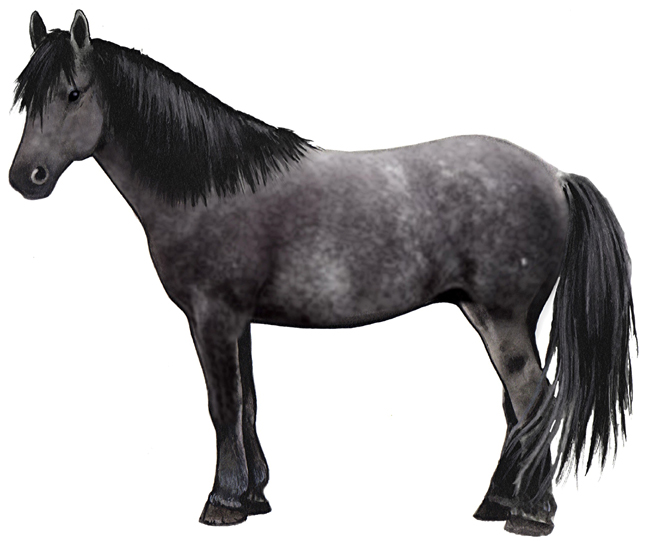|
|
| Nokota |
 |
The Nokota horse is a distinct
type of horse that once ran wild in the Little Missouri
Badlands, located in Southwestern North Dakota. They are believed to
descend from ones owned by the famous Indian chief, Sitting Bull.
Throughout the early twentieth century, bands of wild horses
continued to run throughout the rugged badlands area. Local ranchers
often rounded them up, for both sport and profit. Following the
drought and depression of the 1930s, federal and state agencies
cooperated to eradicate wild horses from western North Dakota. When
Theodore Roosevelt National Park was developed during the late
1940s, a few bands of wild horses were inadvertently enclosed within
the Park's boundary fence. By 1960, they were the last surviving
wild horses in North Dakota.
Between 1950 and 1970, the National Park Service attempted to
remove all horses from the park. Public opposition to the removal of
the horses in and a growing recognition that wild horses had been
part of the historical scene during the open range days, led to a
change in policy during the 1970s. Since that time, the Park has
tolerated a limited number of horses, which are managed as a
"historical demonstration herd".
At that point, horsemen Leo and Frank Kuntz of Linton, North
Dakota, began buying as many of the original Park horses as they
could, in order to save them from slaughter. They became
convinced that the horses represented a unique and historical type,
and they admired their agility and stamina. Researching the origins
of the horses, they discovered that Sitting Bull's confiscated
Indian ponies had been purchased and range bred by the Marquis de
Mores, founder of the town of Medora where the Park headquarters are
located. They believe that the Sitting Bull horses contributed to
the wild herds that still existed when the Park later enclosed the
same range. |
Image
copyright Feenixx Publishing.
All right reserved. May not be used without prior written consent. |
| |
| |
| |
| |
|